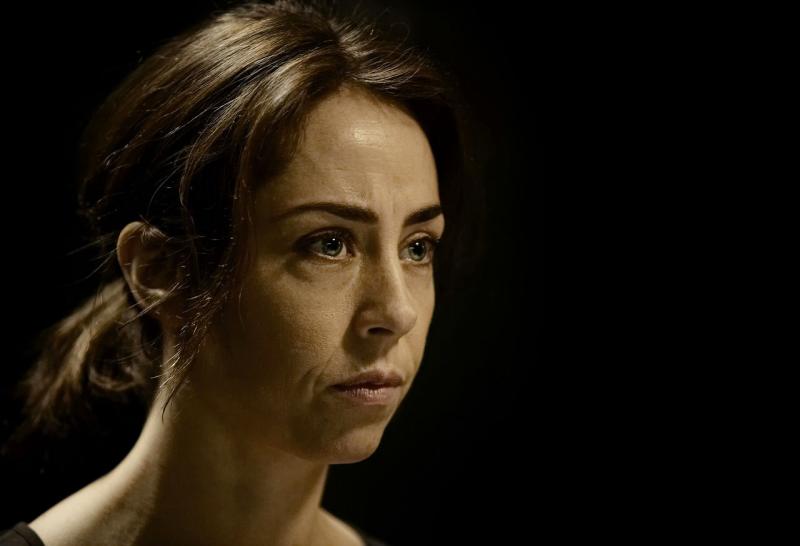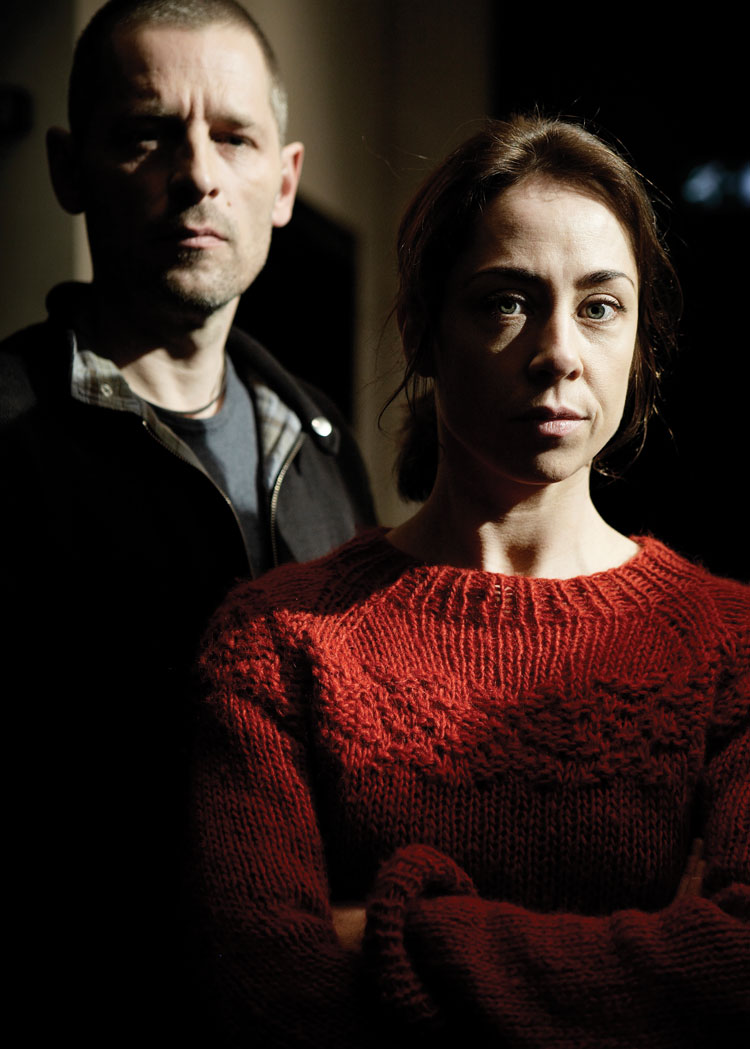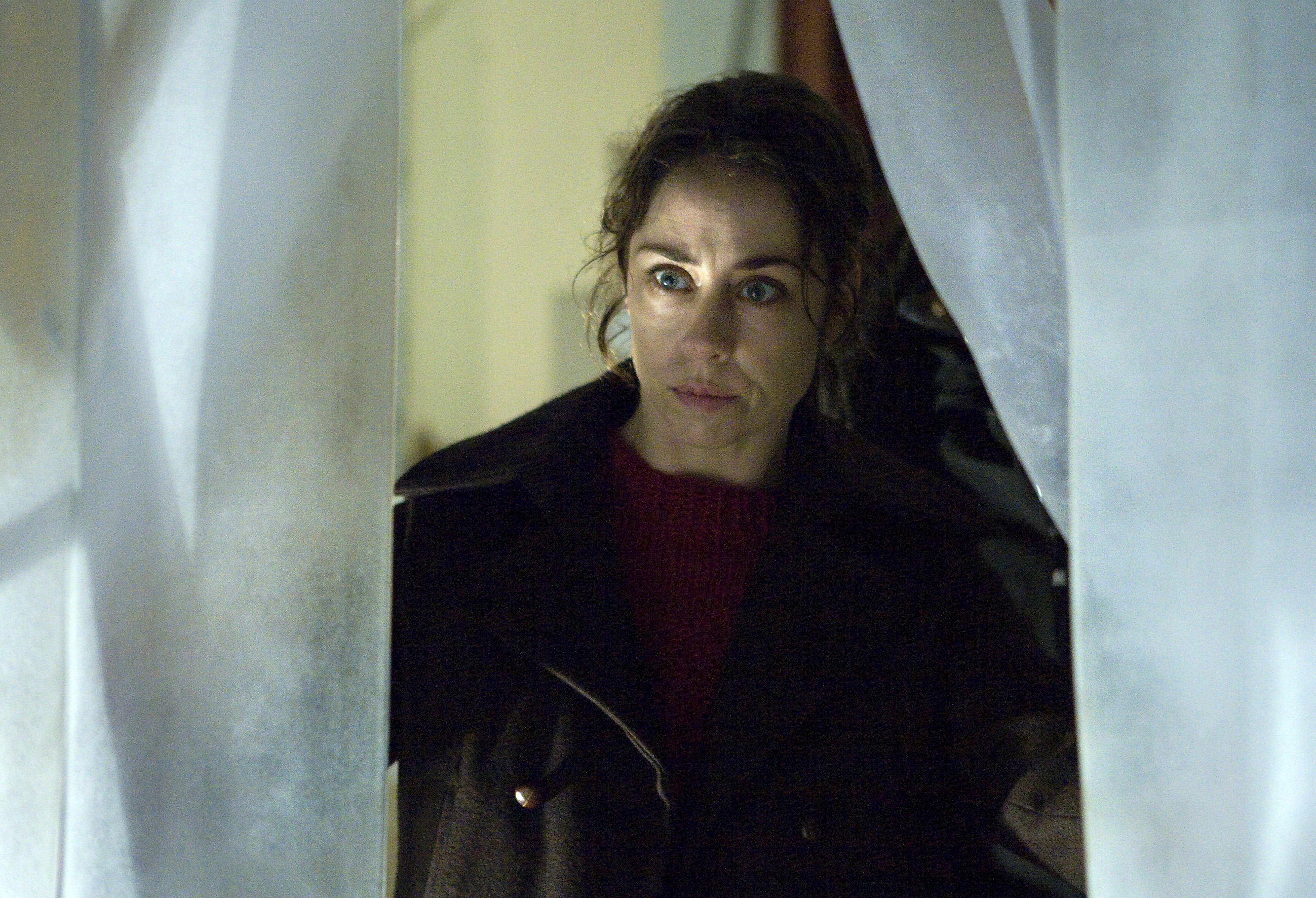The Killing II, BBC Four | reviews, news & interviews
The Killing II, BBC Four
The Killing II, BBC Four
Series two of BAFTA-winning Nordic noir gets off to a flyer

People speak to her. It could be her mother. It could be a colleague. But she doesn’t react, continues what she’s doing. Which, usually, is leaving. It’s welcome back to Sarah Lund, whose watchability is in inverse proportion to her demonstrativeness. As recalcitrant detective Lund, in the second series of Denmark’s The Killing, Sofie Gråbøl is as magnetic as the first time around, whatever she’s wearing.
After the lash-ups of the first series – the killing of her detective partner, serial insubordination, time spent on the wrong suspects, pissing off politicians, stalling her partner, alienating her son – Lund’s been banished to Gedser, Denmark’s most southerly town. Town is stretching it a bit, as Gedser is little more than a bunch of houses on an island that fan out from a dock. She checks the documentation of vehicles rolling off the ferry from Germany. Not so much sent to Coventry, more like being despatched for sentry duty in the Hebrides. Nice to see her eating off a plate there, rather than from a saucepan.
 Of course, Copenhagen can’t do without her. Lund’s old boss, the even more taciturn Lennart Brix (played with magnificent woodenness by Morten Suurballe) wants her to look over a particularly grisly murder, just to see what she thinks (pictured right: from left, Suurballe, Gråbøl and Mikael Birkkjaer). She thinks loads and is soon convinced it’s not the crime of passion it’s painted as. The top brass haven't much patience, but Brix makes them hear her out.
Of course, Copenhagen can’t do without her. Lund’s old boss, the even more taciturn Lennart Brix (played with magnificent woodenness by Morten Suurballe) wants her to look over a particularly grisly murder, just to see what she thinks (pictured right: from left, Suurballe, Gråbøl and Mikael Birkkjaer). She thinks loads and is soon convinced it’s not the crime of passion it’s painted as. The top brass haven't much patience, but Brix makes them hear her out.
And of course she’s right and we're pitched into a world where Islamic fundamentalism, politics and a furtive army are soon intertwined. At the first briefing on the crimes that she attends, close to the back of a room, she’s unobtrusive. Yet she’s soon in the field issuing orders and haring off on her own to interview an incarcerated colleague of the series’s second victim, an army man.
Lund's path in the narrative is dogged by that of Thomas Buch, the new justice minister (a rotund, rumpled and unshaven Nicolas Bro). Lund is visited in Gedser and asked back to Copenhagen. She says no. After the incumbent’s taken ill, Buch is asked to be the new minister. He says no. So on. Then – blimey – Buch finds pictures of the murder in his predecessor’s files. The Lund-Buch paths have to meet.
 Although the domestic hasn’t yet hoved in, the series is still about the ripples of the crimes and the individual stories of those pitched into view. Buch mentions his wife and it’s a fair bet his personal circumstances will figure as the drama unfolds. In episode two of this double bill, Lund tells her new partner Ulrik Strange (Mikael Birkkjaer, pictured left with Gråbøl) that she doesn’t want to talk about her past. He says he hadn’t listened to the gossip. It’ll be dug into.
Although the domestic hasn’t yet hoved in, the series is still about the ripples of the crimes and the individual stories of those pitched into view. Buch mentions his wife and it’s a fair bet his personal circumstances will figure as the drama unfolds. In episode two of this double bill, Lund tells her new partner Ulrik Strange (Mikael Birkkjaer, pictured left with Gråbøl) that she doesn’t want to talk about her past. He says he hadn’t listened to the gossip. It’ll be dug into.
When politics comes in, it’s the familiar see-saw of the constant negotiations between the parties that make up Denmark's ruling coalition. Buch is seeking agreement for an anti-terrorism bill. This, though, is yesterday’s political framework. Denmark changed in September 2011 when the right-wing coalition lost the election to a broadly socialist coalition who are still proving themselves. When flyers against Denmark’s military presence in the Islamic world are found at the site of the second victim's murder, their source is traced to Nørrebro, Copenhagen’s most culturally mixed area. Being this specific is deliberate (a wild goose chase in the first series followed a Muslim suspect). Denmark saw the effect of the cartoons published in 2005 by the newspaper Jyllands-Posten in 2005. The Killing II’s political backdrop isn’t an anachronism as the issues are still live, so these are more than plot devices.
 Still, The Killing II is billed as “a thriller by Søren Sveistrup”. The market for Nordic thrillers and crime fiction is hungry – posters in London's underground proclaim that a book by Norway’s Jo Nesbø is bought every 23 seconds. We’ve had three TV Wallander’s so far. The first series of The Killing was remade in America, for America and then seen here on Channel 4. There’s an implication that markets which need feeding require fast food. But like the reverse relationship between the Lund demeanour and the fascination it generates, The Killing II is as solid as a home-cooked roast.
Still, The Killing II is billed as “a thriller by Søren Sveistrup”. The market for Nordic thrillers and crime fiction is hungry – posters in London's underground proclaim that a book by Norway’s Jo Nesbø is bought every 23 seconds. We’ve had three TV Wallander’s so far. The first series of The Killing was remade in America, for America and then seen here on Channel 4. There’s an implication that markets which need feeding require fast food. But like the reverse relationship between the Lund demeanour and the fascination it generates, The Killing II is as solid as a home-cooked roast.
The Killing II is seamless and, extraordinarily for a modern television drama, it’s impossible to work out where ad breaks might be slotted. It differs from the first series by more than being 10 episodes to the first’s 20. There are less shocks and little – so far – on the effects of the crimes on those close to the victims.
The BBC scheduled this opening bill against episodes three and four of this week’s other foreign buy-in, Pan Am. What they’re saying is open to conjecture – and theartsdesk has already wondered what the BBC is up to with Pan Am's scheduling (and with BBC Four) – but there’s no ambiguity about which programme should be watched. Especially as The Killing II is mesmerising.
Watch The Killing II's Sofie Gråbøl being interviewed on the BBC's Culture Show
Add comment
The future of Arts Journalism
You can stop theartsdesk.com closing!
We urgently need financing to survive. Our fundraising drive has thus far raised £49,000 but we need to reach £100,000 or we will be forced to close. Please contribute here: https://gofund.me/c3f6033d
And if you can forward this information to anyone who might assist, we’d be grateful.

Subscribe to theartsdesk.com
Thank you for continuing to read our work on theartsdesk.com. For unlimited access to every article in its entirety, including our archive of more than 15,000 pieces, we're asking for £5 per month or £40 per year. We feel it's a very good deal, and hope you do too.
To take a subscription now simply click here.
And if you're looking for that extra gift for a friend or family member, why not treat them to a theartsdesk.com gift subscription?
more TV
 Murder Before Evensong, Acorn TV review - death comes to the picturesque village of Champton
The Rev Richard Coles's sleuthing cleric hits the screen
Murder Before Evensong, Acorn TV review - death comes to the picturesque village of Champton
The Rev Richard Coles's sleuthing cleric hits the screen
 Black Rabbit, Netflix review - grime and punishment in New York City
Jude Law and Jason Bateman tread the thin line between love and hate
Black Rabbit, Netflix review - grime and punishment in New York City
Jude Law and Jason Bateman tread the thin line between love and hate
 The Hack, ITV review - plodding anatomy of twin UK scandals
Jack Thorne's skill can't disguise the bagginess of his double-headed material
The Hack, ITV review - plodding anatomy of twin UK scandals
Jack Thorne's skill can't disguise the bagginess of his double-headed material
 Slow Horses, Series 5, Apple TV+ review - terror, trauma and impeccable comic timing
Jackson Lamb's band of MI5 misfits continues to fascinate and amuse
Slow Horses, Series 5, Apple TV+ review - terror, trauma and impeccable comic timing
Jackson Lamb's band of MI5 misfits continues to fascinate and amuse
 Coldwater, ITV1 review - horror and black comedy in the Highlands
Superb cast lights up David Ireland's cunning thriller
Coldwater, ITV1 review - horror and black comedy in the Highlands
Superb cast lights up David Ireland's cunning thriller
 Blu-ray: The Sweeney - Series One
Influential and entertaining 1970s police drama, handsomely restored
Blu-ray: The Sweeney - Series One
Influential and entertaining 1970s police drama, handsomely restored
 I Fought the Law, ITVX review - how an 800-year-old law was challenged and changed
Sheridan Smith's raw performance dominates ITV's new docudrama about injustice
I Fought the Law, ITVX review - how an 800-year-old law was challenged and changed
Sheridan Smith's raw performance dominates ITV's new docudrama about injustice
 The Paper, Sky Max review - a spinoff of the US Office worth waiting 20 years for
Perfectly judged recycling of the original's key elements, with a star turn at its heart
The Paper, Sky Max review - a spinoff of the US Office worth waiting 20 years for
Perfectly judged recycling of the original's key elements, with a star turn at its heart
 The Guest, BBC One review - be careful what you wish for
A terrific Eve Myles stars in addictive Welsh mystery
The Guest, BBC One review - be careful what you wish for
A terrific Eve Myles stars in addictive Welsh mystery
 theartsdesk Q&A: Suranne Jones on 'Hostage', power pants and politics
The star and producer talks about taking on the role of Prime Minister, wearing high heels and living in the public eye
theartsdesk Q&A: Suranne Jones on 'Hostage', power pants and politics
The star and producer talks about taking on the role of Prime Minister, wearing high heels and living in the public eye
 King & Conqueror, BBC One review - not many kicks in 1066
Turgid medieval drama leaves viewers in the dark
King & Conqueror, BBC One review - not many kicks in 1066
Turgid medieval drama leaves viewers in the dark
 Hostage, Netflix review - entente not-too-cordiale
Suranne Jones and Julie Delpy cross swords in confused political drama
Hostage, Netflix review - entente not-too-cordiale
Suranne Jones and Julie Delpy cross swords in confused political drama

Comments
DR is funded by a licence fee
Indeed Hazel. But like the